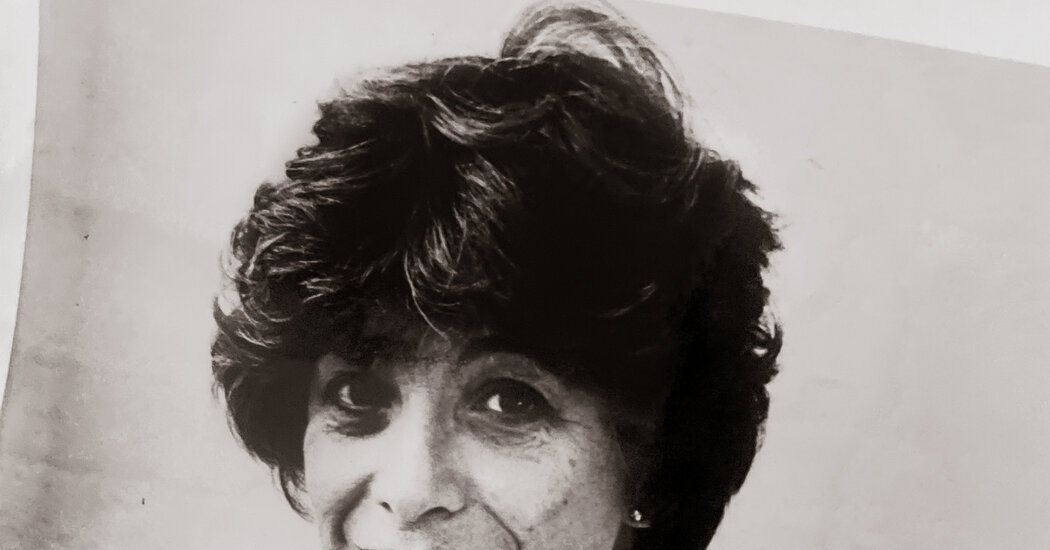Inger McCabe Elliott, a photographer and designer who, with her husband, was conned at her home in Manhattan by a slick-talking 19-year-old purporting to be Sidney Poitier’s son — an incident that helped inspire John Guare to write his celebrated play “Six Degrees of Separation” — died on Jan. 29 at her home in Manhattan. She was 90.
Her son, Alec McCabe, confirmed the death.
It was a bizarre New York tale.
In early October 1983, Mrs. Elliott and her husband, Osborn Elliott, a former top editor of Newsweek who at the time was the dean of the Columbia University Graduate School of Journalism, got a call from a young man who introduced himself as David Poitier.
He said that he was a friend of Mrs. Elliott’s daughter Kari McCabe, and that muggers had stolen his money and a term paper he had written about the criminal justice system. He needed a place to stay, he said, until his father arrived in Manhattan the next day to direct scenes for the film version of the Broadway musical “Dreamgirls.” (Mr. Poitier had six daughters but no sons, and he had no involvement in “Dreamgirls.”)
Charmed, the Elliotts invited the young man — his real name was David Hampton, they later learned — to spend the night at their East Side apartment and gave him $50 and some clothes. He asked Mrs. Elliott to wake him early the next morning so that he could go jogging.
The Elliotts were unable to reach Kari McCabe that night to confirm Mr. Hampton’s claim that they were friends. (She had no idea who he was, they later found out.)
The next morning, Mrs. Elliott found Mr. Hampton in bed with a man he had smuggled into the apartment.
“David languidly rolls over, points to the guy and says, ‘This is Malcolm Forbes’s nephew who was locked out of his house,’” Alec McCabe said in a phone interview, recalling the story he had been told by his mother and stepfather, who was familiarly known as Oz. “Oz threw him out by the scruff of his neck — and he asked to borrow $50 to buy flowers for Inger.”
Shocked by the episode, Mrs. Elliott called her lawyer, Lea Iselin, whose husband, John Jay Iselin, was the president of the New York public television station Channel 13.
“She told Lea, ‘The craziest thing just happened,’ and Lea said, ‘I think he was at our house the night before,’” Kari McCabe said by phone.
The Iselins had also let Mr. Hampton stay overnight at their apartment and given him money. Mr. Iselin’s suspicions about the young man grew when he could not confirm his story that Sidney Poitier would be staying at the Pierre hotel and filming outside the Plaza. He told Mr. Hampton to leave.
Mr. Hampton had apparently found the Elliotts’ and the Iselins’ names in an address book he had stolen from a student at Connecticut College; the student had attended Phillips Academy in Andover, Mass., with some of the Elliotts’ and Iselins’ children.
Mr. Hampton was arrested on Oct. 18, 1983, and charged with burglary and criminal impersonation for the incidents involving the Elliotts, the Iselins and other prominent New Yorkers. He eventually pleaded guilty to a lesser charge, attempted burglary, and served 21 months in prison.
By then, Mr. Guare had been friends with Mrs. Elliott for about a decade. The Elliotts told him about Mr. Hampton’s scam soon after the incident, when they were all in England.
“She called me and said, ‘We’ve just arrived in London, and do we have a story for you,’” Mr. Guare said in a phone interview. “‘Meet us tonight and we’ll tell you all.’”
They met at dusk in the garden of the home of the British editor Simon Jenkins and his wife, the actress Gayle Hunnicutt.
“The storytelling started at dusk,” Mr. Guare recalled, “and we were listening to their voices in the dark.”
The yarn didn’t compel Mr. Guare to start writing “Six Degrees” immediately; it was six years before he returned to the story.
“When I came back to it, there had been lots of stories about him,” Mr. Guare said, referring to Mr. Hampton, “and I heard that it had happened to other people.”
The play opened in 1990, first Off Broadway at the Mitzi E. Newhouse Theater, and several months later on Broadway, at the Vivian Beaumont Theater, both at Lincoln Center.
Inger Abrahamsen was born on Feb. 23, 1933, in Oslo. Her father, David, who was from a prominent Jewish family, was a psychoanalyst. Her mother, Lova (Katz) Abrahamsen, ran the home.
Dr. Abrahamsen fled the Nazis in 1940 and was followed a year later by his wife and their two daughters, Inger and Anne-Marie. They traveled east on the Trans-Siberian Railway to Vladivostok, then continued on to Japan and the United States.
The family stayed for about a year in Joliet, Ill., where Dr. Abrahamsen had found work at a penitentiary, before settling in New York.
After graduating from Cornell University in 1954 with a bachelor’s degree in history, Inger earned a master’s, also in history, three years later at Radcliffe College. She worked briefly as a middle-school teacher in Brookline, Mass. She then shifted careers, becoming a photojournalist under the tutelage of the photographer Ken Heyman, who was known for his collaboration with the anthropologist Margaret Mead on a trip to Bali in 1957.
She moved to Hong Kong in the early 1960s with her first husband, Robert McCabe, a journalist. Her assignments included war coverage in Vietnam — she was shooting from a helicopter there while eight months pregnant with Alec — as well as visits to movie sets, working for Vogue, Life, Esquire and Time magazines. In Hong Kong, the McCabes adopted two Chinese refugees, the brothers Bing and Pui Wong.
With her magazine work drying up, Mrs. Elliott shifted to fashion design, creating boldly patterned skirts that became popular sellers at department stores like Henri Bendel and Bonwit Teller.
In the early 1970s, she opened a business, China Seas, which imported intricately dyed batik fabrics from Indonesia. She later expanded it into a design company, working with Javanese and Chinese batik artists in developing her own designs. She wrote books about batik, including “Batik: Fabled Cloth of Java” (1984). She sold her company in the early 1990s and donated fabrics from her private collection to the Los Angeles County Museum of Art.
Mrs. Elliott designed her wedding gown when she married Mr. Elliott in 1973 — a light blue and white organdy creation with a bodice of Indonesian batik over a sheath of tan Japanese silk.
In addition to her son Alec and daughter Kari, Mrs. Elliott is survived by another daughter, Marit McCabe; her son Bing Wong; her stepdaughters, Diana Lidofsky and Dorinda and Cynthia Elliott; her sister, Anne-Marie Foltz; 14 grandchildren; and five great-grandchildren. Her marriage to Mr. McCabe ended in divorce. Mr. Elliott died in 2008, Pui Wong in 2020.
Mr. Guare turned David Hampton’s intrusion into Mrs. Elliott’s life into a vibrant social satire that ran on Broadway for 485 performances at the Beaumont. In the play, Paul, the young crook who claims to be Mr. Poitier’s son, upends the lives of Ouisa and Flan Kittredge and several other people. It is Ouisa who revels in the idea that it takes a chain of only six people to connect anyone on the planet with anyone else.
“Six Degrees” was nominated for four Tony Awards, including best play, and won for Jerry Zaks’s direction. In 1993, Mr. Guare adapted it into a film, in which Will Smith played Paul and Stockard Channing reprised her role as Ouisa from the Broadway production, earning an Oscar nomination for best actress.
Mr. Hampton unsuccessfully sued Mr. Guare, Lincoln Center Theater and other parties for $100 million in damages for using incidents from his life in the play, and left death threats on Mr. Guare’s answering machine. Mr. Hampton died in 2003 at 39 in a small room he occupied in an AIDS residence at a New York hospital.
Mr. Guare said that although his play was inspired by the Elliotts’ experience of being duped, Ouisa, an East Side hostess, was not based on Mrs. Elliott.
“Ouisa was not Inger,” he said. “She was the character the play needed.”


